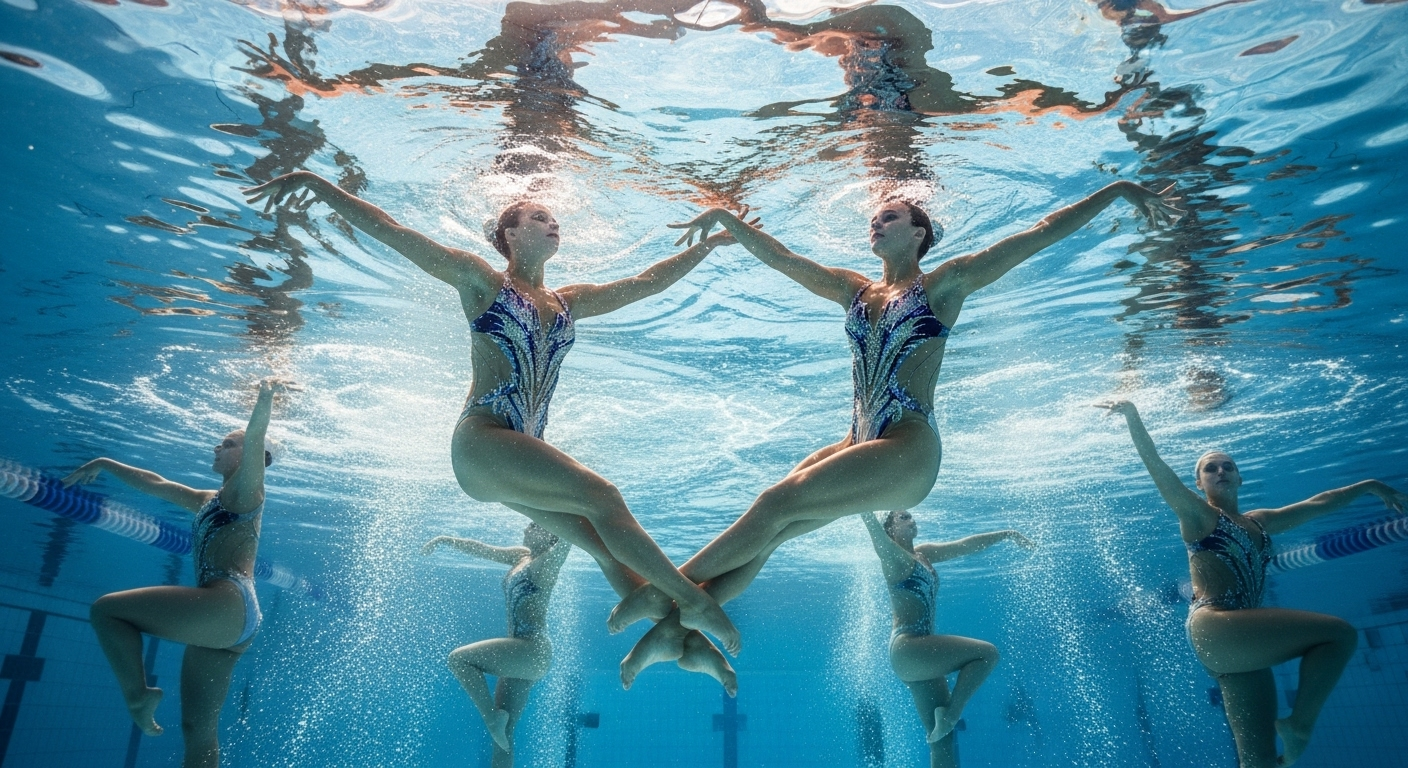Aquatic Artistry: Synchronized Swimming's Competitive Edge
Synchronized swimming, a sport that blends athleticism with artistic expression, has long captivated audiences with its graceful underwater performances. But beneath the sequined suits and perfectly coiffed hair lies a demanding discipline that pushes athletes to their physical and mental limits. This aquatic art form requires a unique combination of strength, flexibility, and breath control, all while maintaining perfect synchronization with teammates and music.

The Rigorous Training Regimen
Behind every flawless routine lies countless hours of intense training. Synchronized swimmers typically train for 6-8 hours daily, both in and out of the water. Underwater, athletes work on perfecting their technique, timing, and stamina, often holding their breath for extended periods. On land, cross-training involves gymnastics, dance, and strength conditioning to build the core power and flexibility essential for executing complex moves with apparent ease.
Technical Mastery and Artistic Innovation
Synchronized swimming routines are judged on both technical merit and artistic impression. The technical aspect evaluates the difficulty and execution of specific elements, including lifts, platforms, and precise formations. Artistic scores consider choreography, interpretation of music, and overall presentation. As the sport evolves, athletes and coaches continuously push boundaries, incorporating increasingly challenging elements to elevate their performances and captivate judges and spectators alike.
The Mental Game: Synchronization and Pressure
While physical prowess is crucial, the mental aspect of synchronized swimming is equally demanding. Athletes must maintain unwavering focus and spatial awareness, even when submerged and disoriented. The pressure to perform flawlessly in high-stakes competitions adds another layer of psychological challenge. Teams employ various strategies, including visualization techniques and mindfulness practices, to enhance their mental resilience and maintain composure under pressure.
Technological Advancements in Training and Performance
Recent years have seen the integration of technology into synchronized swimming training and performance analysis. Underwater cameras and motion tracking systems allow coaches to provide real-time feedback on positioning and synchronization. Virtual reality simulations are being explored as a tool for mental preparation, allowing athletes to visualize and practice routines out of the water. These technological innovations are helping teams refine their techniques and push the boundaries of what’s possible in the pool.
The Global Landscape: Emerging Powers and Evolving Styles
Traditionally dominated by Russia and other Eastern European countries, the synchronized swimming landscape is evolving. Nations like Japan, China, and Spain have emerged as formidable competitors, each bringing unique stylistic elements to their routines. This global diversification has led to a rich tapestry of performances, blending cultural influences with athletic innovation and challenging the established norms of the sport.
Synchronized Swimming’s Fight for Recognition
Despite its Olympic status, synchronized swimming often struggles for mainstream recognition and funding. Athletes and advocates work tirelessly to promote the sport, highlighting its unique blend of athleticism, artistry, and teamwork. Efforts to rebrand the sport as “artistic swimming” aim to emphasize its athletic demands and appeal to a broader audience. These initiatives seek to secure the sport’s future and inspire the next generation of aquatic artists.
The Physiological Marvels of Underwater Performance
The physical adaptations required for synchronized swimming are nothing short of remarkable. Athletes develop extraordinary lung capacity and CO2 tolerance, enabling them to perform complex underwater sequences without visible signs of exertion. Studies have shown that elite synchronized swimmers can hold their breath for up to three minutes during routines, showcasing cardiovascular and respiratory adaptations that push the boundaries of human physiology.
Choreography: The Fusion of Sport and Art
Creating a synchronized swimming routine is a complex process that blends athletic skill with artistic vision. Choreographers must consider not only the physical capabilities of the athletes but also the three-dimensional space of the aquatic environment. Music selection plays a crucial role, with choreographers meticulously crafting routines that interpret the rhythm and emotion of the chosen piece. This fusion of sport and art creates a unique spectacle that sets synchronized swimming apart from other competitive disciplines.
The Role of Team Dynamics in Success
The synchronized nature of the sport demands an exceptional level of teamwork and trust. Athletes must move in perfect unison, often relying on subtle cues and an innate sense of timing developed through countless hours of practice together. The importance of team cohesion extends beyond the pool, with many teams living and training together year-round to foster the deep connection necessary for peak performance. This intense team dynamic creates bonds that often last well beyond competitive careers.
Judging Controversies and Scoring Evolution
Like many subjective sports, synchronized swimming has faced its share of judging controversies. The complex scoring system, which evaluates both technical and artistic elements, has been subject to criticism and revision over the years. Efforts to increase transparency and objectivity in judging have led to the development of more detailed criteria and the use of video review in some competitions. These ongoing refinements aim to ensure fair evaluation of performances and maintain the integrity of the sport.
The Challenge of Costume and Makeup Design
Often overlooked but crucial to the overall presentation, costume and makeup design in synchronized swimming present unique challenges. Suits must be both aesthetically pleasing and functional, withstanding chlorine exposure and allowing for a full range of motion. Waterproof makeup application is an art form in itself, requiring products and techniques that can withstand submersion while enhancing the athletes’ expressions. The visual impact of these elements contributes significantly to the artistic scores and overall spectator experience.
Synchronized Swimming’s Impact on Physical Development
Participation in synchronized swimming from a young age can have profound effects on physical development. The sport’s demands for flexibility, core strength, and breath control contribute to the development of exceptional body awareness and control. Young athletes often display advanced proprioception and balance skills that transfer to other areas of life. However, the intensive training regimen also raises concerns about the long-term physical impact, particularly on joint health and spinal alignment, prompting ongoing research into sustainable training practices.
The Future of Synchronized Swimming: Innovations and Challenges
As synchronized swimming looks to the future, it faces both exciting opportunities and significant challenges. Innovations in underwater sound systems are opening new possibilities for musical interpretation and audience engagement. Experimental performances incorporating light shows and projection mapping hint at the potential for even more immersive spectacles. However, the sport must also grapple with issues of accessibility and diversity, striving to broaden its appeal and participant base while maintaining its unique identity in the world of competitive athletics.





